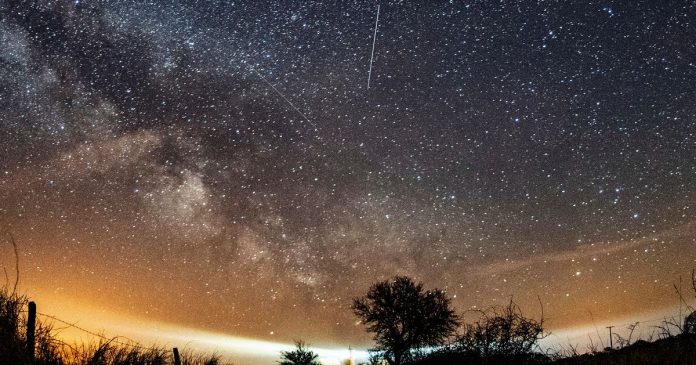Meteor showers are a common occurrence throughout the year, but few promise to be as mesmerising as this beautiful display that only appears in the month of April.
On an average clear enough night at any time of the year and without any light pollution, you might see a shooting star across the sky, but at this precise time of this month, there are more overhead than usual.
Known as the Lyrid meteor shower, it runs from April 16 and lasts until April 25, but there is a peak time to catch it.
Also nicknamed ‘Lyrid fireballs’, there is a chance to see up to an incredible 18 meteors per hour at the peak.
“With the Lyrids you’ll be looking for a little flurry of short-lived streaks of light – what you might popularly call shooting stars,” explained Dr Robert Massey, deputy executive director at the Royal Astronomical Society (RAS).
The Lyrids have been observed and reported since 687 BC – and no other modern shower has been recorded as far back in time.
“We think they’re the earliest meteor shower ever seen by humans – more than 2,700 years ago, right back in the 7th century BC,” Dr Massey added.
It’s an annual event that takes place each April, falling on the same dates each year, and we’re about to hit the best times.
The radiant of the meteor shower is located in the constellation Lyra, near its brightest star, Vega, hence it’s unusual naming.
The meteor shower will technically be visible across the UK now, though to see this phenomenon you’ll need clear skies.
More importantly, you will need to position yourself far away from light pollution. Any artificial light will dilute the stars in the sky.
The shower will officially peak just before dawn on April 24 – between about 3-5am – so set your alarms, wrap up and head outside somewhere remote to catch the intergalactic show. Luckily, you won’t need a telescope either – it’s all visible with the naked eye.
A meteor shower is when the Earth passes through the debris stream of a comet – icy, rocky bodies left over from the formation of the solar system. When this happens, the bits of comet debris, most no larger than a grain of sand, create streaks of light in the night sky as they burn up in Earth’s atmosphere, creating multiple meteors racing across the sky at, or near, the same time.
Interestingly, despite sometimes being called shooting stars, they’re not actually stars and can range in size from anything larger than a marble.
This size allows them to produce a fireball as the enter the atmosphere, giving them their bright look as mis-titled name of shooting stars.
If you’re a keen stargazer, then don’t miss these other dazzling sky events –
At Reach and across our entities we and our partners use information collected through cookies and other identifiers from your device to improve experience on our site, analyse how it is used and to show personalised advertising. You can opt out of the sale or sharing of your data, at any time clicking the “Do Not Sell or Share my Data” button at the bottom of the webpage. Please note that your preferences are browser specific. Use of our website and any of our services represents your acceptance of the use of cookies and consent to the practices described in our Privacy Notice and Cookie Notice.


